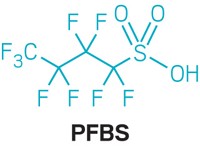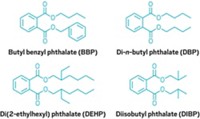Advertisement
Grab your lab coat. Let's get started
Welcome!
Welcome!
Create an account below to get 6 C&EN articles per month, receive newsletters and more - all free.
It seems this is your first time logging in online. Please enter the following information to continue.
As an ACS member you automatically get access to this site. All we need is few more details to create your reading experience.
Not you? Sign in with a different account.
Not you? Sign in with a different account.
ERROR 1
ERROR 1
ERROR 2
ERROR 2
ERROR 2
ERROR 2
ERROR 2
Password and Confirm password must match.
If you have an ACS member number, please enter it here so we can link this account to your membership. (optional)
ERROR 2
ACS values your privacy. By submitting your information, you are gaining access to C&EN and subscribing to our weekly newsletter. We use the information you provide to make your reading experience better, and we will never sell your data to third party members.
Environment
European Union further restricts four phthalates
Commonly used plasticizers would be prohibited at levels greater than 0.1% by weight in most products
by Britt E. Erickson
June 26, 2017
| A version of this story appeared in
Volume 95, Issue 26
The European Union is a step closer to prohibiting the use of four phthalates in consumer products. The Socio-Economic Analysis Committee of the European Chemicals Agency voted on June 20 in favor of restricting most uses of the chemicals under the EU’s Registration, Evaluation, Authorisation & Restriction of Chemicals (REACH) law.
The four phthalates are butylbenzyl phthalate (BBP), di(2-ethylhexyl) phthalate (DEHP), dibutyl phthalate (DBP), and diisobutyl phthalate (DIBP).

The EU banned the use of the substances, which have been linked to reproductive effects, in 2015 under REACH. But companies can seek—and have obtained—continued-use authorizations if there are no safer alternatives. The proposed restrictions would eliminate continued-use authorizations for consumer products that contain the phthalates at levels greater than 0.1% by weight.
The four phthalates are used to soften plastics found in a wide range of consumer products, including flooring, coated fabrics and paper, recreational gear, mattresses, footwear, office supplies, wires, and cables. Measuring equipment for laboratory use would be exempt from the restrictions.
The European Commission still needs to formally adopt the restrictions, which would become effective three years after they are finalized.





Join the conversation
Contact the reporter
Submit a Letter to the Editor for publication
Engage with us on Twitter